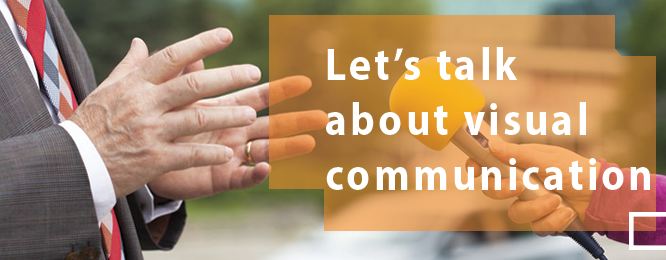Communication
Donald Trump: The Extreme Visual Communicator?

Maybe your boss is like-minded?
By Roger HB Davies, CEO
McLuhan & Davies Communications/Think on Your Feet International
Understanding our right-brain world
I’m choosing my words carefully. This column is not a political commentary; it’s a communication commentary.
Nor is this, oblique or overt, a dig at or a “favoriting” of President Donald Trump, or a commentary about his personality.
It’s all about describing a communication style, based on our 20 years of communication research into left- and right-brained communication (which all started with media guru Marshall McLuhan).
And one of our key findings from some 10,000 professionals was that someone’s personality is a red herring in understanding the communication process. President Trump is merely a timely example, in that his personality distracts listeners from understanding his true communication-messaging system .
It’s worth discussing because an increasing number of executives communicate with the same style as President Trump. It’s the wave of the future. So we need to understand it, and learn to work with it, especially if this style is not to your preference.
Also, it’s a style (not the personality) favored by many millennials. That on its own provides a good reason to understand how this mode of communication works.
In short, President Trump prefers right-brain communication, and right-brain thinking, which the McLuhan in us terms “visual communication”.
What does this mean in practice?
- President Trump is extremely spontaneous, to say the obvious. He tends to process information fast and make decisions fast. Gut decisions.
- His communication strength focuses on the spoken- , not the written-word. So if something has to go into writing, summaries and bullet points are valued.
- He will therefore prefer short verbal summaries; and will not prefer to read long written reports.
- The skill of getting to the point will be especially valued. He too will get to the point quickly.
- He will manage and paint big pictures, expecting his support team to manage the details. So surrounding himself with a competent and qualified team is vital.
- President Trump also processes most communication emotionally. This surfaces in one of two ways. First, he will tend to react emotionally to a situation. Second, he is sensitive to “image” issues. Image is all. I.e., everyone has to look good, feel good. So while he may verbally articulate a blunt (and extremely direct) negotiating position, he is well aware that his “opponent” has to end up also feeling good.
- We all use words that resonate with each of us. Our research shows that visual communicators respond well to words like: Action. Now. Fast. Change. New. Opportunities.
- They also respond well to such phrases as: “What if…” “Get to the point!” “ What is your point?” “ Show me a bottom line”
Such preferred words and phrases all underlie a theme of impatience embedded into those who prefer visual communication.
Our full research is summarized in the best-selling book MASTERING COMMUNICATIONS—where one character summarizes visual communicators at work as follows:
“You want an opinion fast? You’ll receive one fast. No hanging around. No getting back to you later. No answering a question with another question. I know where I stand. I get an immediate opinion, an instant decision. None of this asking-others-for-input.”
In summary, visual communication is partly about the unconventional, the bending of the rule book, and above all “speed” in processing information.
It also involves a tendency to not look before you leap. “We just jump in, figuring that whatever happens we can fix later,” said one visual communicator polled in our research.
Does this describe anyone you know personally?
The answer is: probably. It’s a style common with many top executives. It’s a style often preferred by many millennials.
So if you want to shift (link) to their style, get to the point and be prepared. But don’t bombard anyone with verbal details. And if you must put something in writing, keep it short, with plenty of summaries, bullet points, and present any key data visually, for fast comprehension. Don’t forget: it’s a wonderful (right-brain) world. President Trump is merely a symptom of the present and the future. Like it or not. 🙂
Discover your own communication style
Our research shows that we communicate in one of three very distinct ways. Find out your own communication style! This assessment takes only 10 minutes to complete and is absolutely free.
How do you really communicate? Take our assessment now!
For Further information:
Read our best-selling Book: MASTERING COMMUNICATIONS, available through Amazon.com. Or as an E-book.
Contact us at info@mdctraining.ca.
Take our workshop: LINKS™. Where our international faculty will guide your organization or team in on-the-job application of communication styles.
Sign up for Online Learning: LINKS ONLINE™. Where these communication principles are explained, and adapted from the book, MASTERING COMMUNICATIONS.


